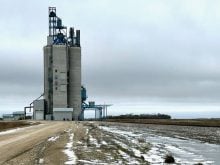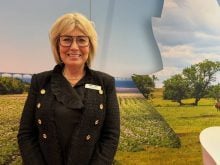PORTAGE LA PRAIRIE, Man. – Dexter cattle, a small-framed breed originally developed by Irish tenant farmers for meat and milk, have received some high profile ink recently.
A recent feature, complete with photos, in the Globe and Mail dubbed the breed “the perfect starter cow” for first-time farmers, and a Toronto Star writer noted that “mini-cows,” both Dexter and miniature Herefords, are becoming the breed of choice for acreage owners intent on preparing for the “global warming apocalypse.”
All this is good news for the Dexter, which was on the verge of extinction a decade ago.
Read Also

Farmland ownership fires up Saskatchewan politicians
Saskatchewan politicians debate the enforcement of farmland ownership laws in the province.
Now, the number of registered adult breeding females in Britain has topped 1,500 and the breed has been removed from the country’s list of endangered livestock breeds, says Pam Heath, Manitoba director of Rare Breeds Canada.
“Your own breed, that you are all so passionate about, the Dexters, are basking in the glory of having been removed from the list,” Heath told a recent meeting of the Canadian Dexter Cattle Association in Portage la Prairie.
Heath said acreage owners value the smaller cattle for “adding beauty to the farm” and their commercial value when used for tapping niche markets.
The Dexter breed has been growing in popularity in Canada in recent years, she added, and the breed boasts 1,000 registered breeding cows in Canada.
The breed’s success is a rare glimmer of hope in the otherwise gloomy picture painted by the United Nations Food and Agriculture Organization, which recently estimated that one livestock breed is lost every month and 950 vegetable varieties have become extinct in the past three years.
Producers have their own varied reasons for raising Dexter cattle.
Ed Post, vice-president of the breed association, started a small herd of eight Dexters after becoming disillusioned with the ever-increasing disease and biosecurity issues. It was a disillusionment that eventually led him to shutter his 400-sow hog operation near London, Ont.
“We run such a hospital-type environment now that it took all the fun out of it,” he said.
“Our vaccination bill just kept getting bigger and bigger. The potential for risk was just too high.”
After getting out of the hog business two years ago, he bought Dexters as a food-producing hobby that would keep the grass down around his barns while he went back to school.
Peter Jeffery, 75, shipped cream from a dairy herd on his 60-acre farm near Portage until 1994.
After he sold the dairy, he was faced with the prospect of mowing the lush grass around his farm. Instead, he bought a herd of Dexters to keep it down. Now he has 12 animals.
“It’s nice to have cattle around the place again,” he said. “And they don’t need gasoline.”
His doctor has advised him to cut back on red meat because of a heart condition. The Dexter steaks are smaller, so he takes two for each meal, he said.
Having livestock again keeps him happy and busy on his small acreage, he added.
Bob Wilton, who also raises Dexter cattle near Portage, said statistics show small acreages are the fastest growing segment in Canadian agriculture.
Dexter cattle appeal to new farmers, he added, because at 800 pounds and waist-high, the small-framed cattle are less intimidating for them and their children and easier on fences.
“A lot of people are moving a little further out of the suburbs, where everything is a little more reasonable, with a smaller community, and they can have their garden and their space,” he said. “Those with small acreages can’t go into the big stuff because they just take up too much land. It just seems more sensible to have a smaller cow.”
Marketing to today’s smaller families is easier on the commercial side, he added, because a side of Dexter beef fits better in the freezer.














